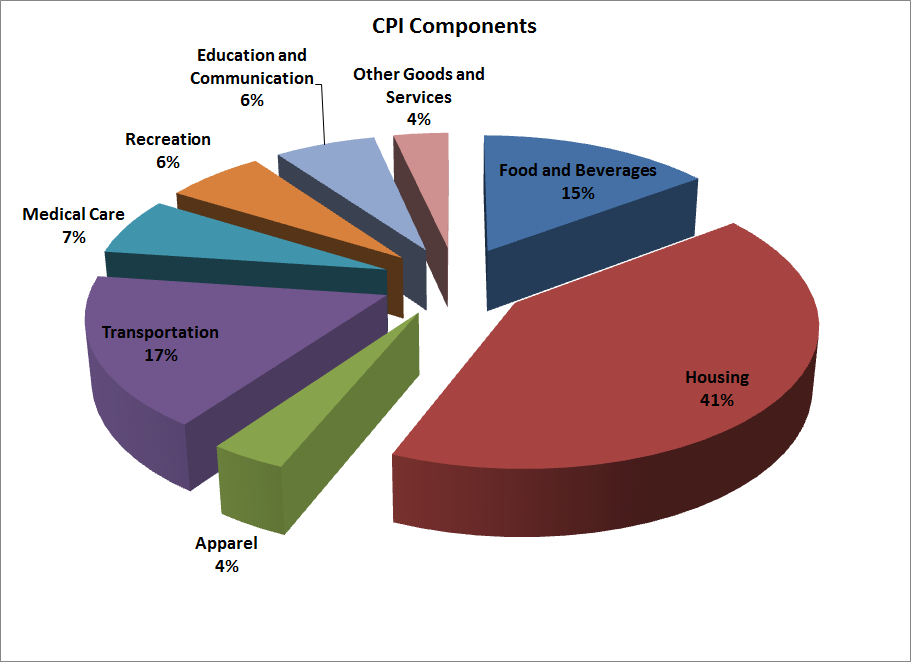

Around the world, various governmental and non-governmental agencies report on a regular basis certain pieces of economic information. Consumer Price Index (CPI) is an index that measures the change in the price of a representative basket of goods and services such as food, energy, housing, clothing, transportation, medical care, entertainment, and education. It is also known as the cost-of-living index. The CPI Core is a key indicator to measure inflation and changes in purchasing trends. A high reading is seen as positive or bullish for the currency, while a low reading is seen as negative.
The Consumer Price Index has a major influence on forex trading. The CPI compares a household's cost of a specific basket of goods and services with the cost of the same basket during an earlier period. As an important economic indicator, CPI impacts not only forex but also interest rates and stock and bond prices. The CPI is also used to make adjustments to cash flow mechanisms, such as pensions, health insurance, and income. As a result, most traders and investors will find that the CPI affects their strategies in some way or the other.
A rapid increase in the value of the CPI figures can give way to inflationary fears as rising prices could lead the central bank to respond by raising interest rates. Raising rates generally leads to less disposable income, reducing spending and thus decreasing the inflationary pressure. An increase in interest rates usually increases the value of a nation's currency, but it can negatively impact the stock market in the short term. This is because some investors may decide to hold money in the deposit as cash to earn interest rather than investing in the market, which is seen to be riskier.
The most-watched figure is the Core CPI, which does not include food and energy prices. It will usually be presented as a seasonally adjusted figure because consumer patterns are widely variable depending on the time of the year. The Core CPI is an important measure because this is the gauge, which the central banks examine in order to adjust its monetary policy. The central banks are using the core CPI because prices of food, oil, and gas are highly volatile and central bank’s tools are slow-acting. In case prices of gas surge considerably, this could lead to high rate of inflation, but the central bank will not take action until this increase affects prices of other goods and services.
The CPI is an indicator of a predictive nature. The report on CPI often moves stock, currency and bond markets, both during the day of the release and on an ongoing basis. It may even set a new course in the markets for future periods. After digesting the CPI report, traders and analysts will usually be provided with clues over what actions may be considered by the Federal Reserve or the European Central Bank at their upcoming policy meetings.
To receive new articles instantly Subscribe to updates.